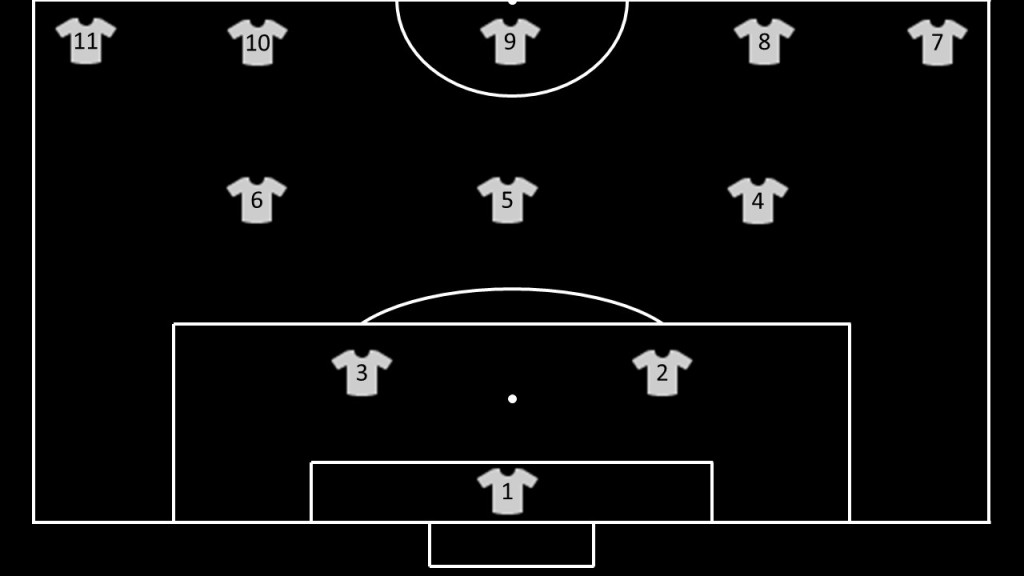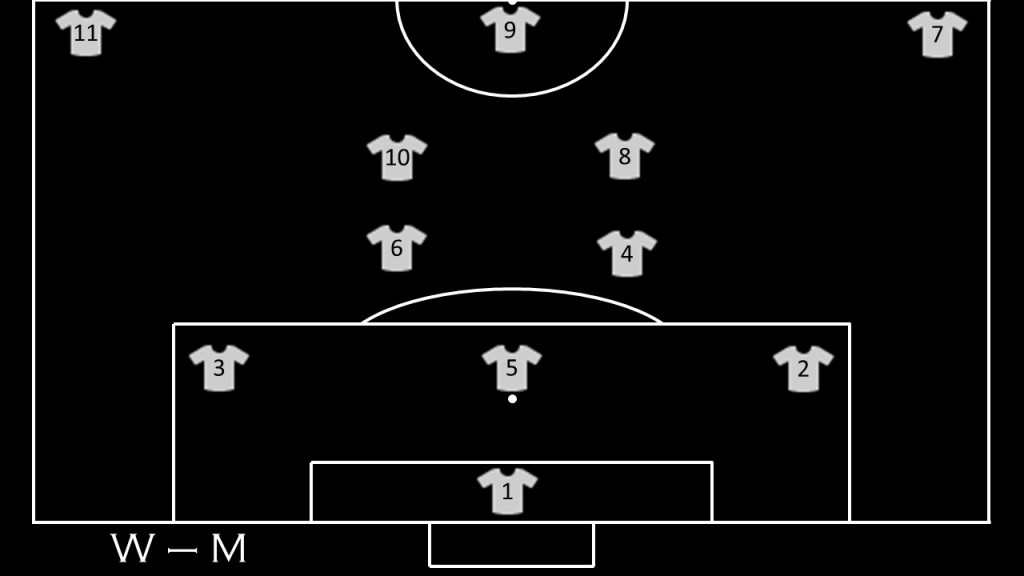Welcome to the Soccer Tavern, where we’re discussing the history, culture, and philosophy of the beautiful game. My name is Dave and in this video, we’re discussing the history of position numbers in soccer.
Specifically, what does an announcer mean when you’re watching a match and he or she refers to a center forward as a #9 or a defensive midfielder as a #6, even though those players may not be wearing that number on their jersey? Well, that’s what we’ll cover in this video. Pull up a seat and let’s start the discussion.
The story of position numbers in soccer starts in the 1920’s with Arsenal manager, Herbert Chapman. He was one of the most outspoken proponents of putting numbers on players’ shirts. Numbers made it easier for his players to recognize teammates and their relative position on the pitch.
Chapman’s original numbering system would evolve into the player position numbers we know today. So what were the original player position numbers? As crazy as this may seem to fans of modern soccer, the popular formation at the time was an attack heavy 2-3-5, meaning two defensive players, three midfielders and five attackers.
Chapman labelled his players in ascending order, right to left, starting with the goalkeeper and ending at the forwards:
- GK – 1
- Right Fullback – 2
- Left Fullback – 3
- Right halfback – 4
- Center halfback – 5
- Left halfback – 6
- Outside-right forward – 7
- Inside-right forward – 8
- Center forward – 9
- Inside-left forward – 10
- Outside-left forward – 11

Shortly after Chapman decided to number his players in the 2-3-5 formation, he began developing a new formation called the W-M in response to the new offside law change. With this new formation, teams played with 3 defenders, 2 defensive midfielders, 2 attacking midfielders, and 3 attackers.
As you will see, rather than renumbering the players in the new system, players in previous roles simply moved positions:
In England, the #5 player from the original formation dropped to be a fullback. And the #2 and #3 players split wider. The #4 and #6 players became defensive midfielders. And the #8 and #10 players dropped back off the forward line to become attacking midfielders.

Over in South America and Continental Europe, the #4 player was generally the one to become an additional fullback with the #5 staying in midfield.
By 1939 English players were required to wear the number of their position on their jersey during matches. This requirement led to the 1940s and ’50s when player numbers and positions became so synonymous that they were used interchangeably by fans and media.
In South America, by the 50s, the 4-2-4 formation became popular. In this formation, another midfielder dropped to be a fullback. But, the backline shuffle differed from country to country.
For example, in Uruguay, the #6 player dropped to be a left fullback and the #3 player became the left CB with #2 being the right CB and #4 being the right fullback
In Argentina, the #6 and #3 positions were swapped with the #3 being the left full back and the #6 being the left CB.
In most of the South American countries, the midfield and forwards were the same. So, the #8 player dropped further into central midfield. And the #10 player pushed up into the forward line as another striker.
England and Europe used the 4-2-4 formation as well with some slight variations.
In England the #6 dropped to be the left CB and the #3 player moved out wide. Additionally, the right fullback remained #2 with the right CB being #5.
Over in continental Europe the additional CB was most often the #5 player. This led to most European formations with a backline from left to right reading as #3, #5, #4, #2.
After the 4-2-4 formation came the 4-3-3 as a popular formation.
In the 4-3-3, the #10 dropped off the forward line to become an additional central midfielder. He was given the role of a playmaker, dropping into pockets of space and creating opportunities for the forwards, mainly through passing.
The #9 slid back into more of a central role. He was tasked with winning long balls and maintaining possession for teammates to get involved in the attack. He was also responsible for scoring headers, usually from crosses that were sent in by the wingers.
Wingers wore #7 and #11 and generally stayed very wide to create space and serve crosses into the box.
The #8 played as a box to box central midfielder (meaning he was expected to both attack and defend in equal measure),
And the #4/5/6, depending on which geographic region you are in, was more focused on defending from the midfield and maintaining defensive shape. He wasn’t too concerned with attacking.

Formations continued to evolve but this 4-3-3 numbering system is the one most widely recognized & used today.
From an American perspective, the most common numbering system referenced is generally the continental European one with #6 as a defensive center midfielder.
But if you’re in England or South America and they reference a different numbering system, you now have some background on why it’s different.
So now, when you’re watching a match and an announcer refers to a #8, you know he or she means a box to box center midfielder who’s all over the pitch in attack and defense, even though that player may not be wearing #8 on his or her jersey.
That’s the history of position numbers in soccer. Thanks for stopping by The Soccer Tavern. We’ll be back with another video soon.
